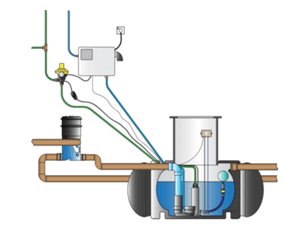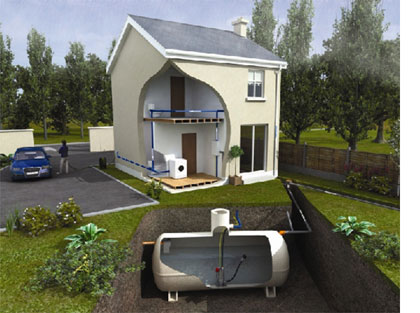
Rainwater Harvesting

Rainwater harvesting systems utilise rainwater collected from the roof through existing gutters and downpipes, passing it through a filtration system into a holding tank which is normally under buried under the ground.
Water is then drawn off via a pump passing through a series of filters to the required outlets such as washing machines and WC cisterns. The system draws rainwater first, but in the event of an empty storage tank, the control unit will automatically switches to mains water supply to provide continuity of supply.
The amount of water that can be harvested will depend on average rainfall and the size of the roof / filter efficiency.
What are the main advantages?
- Rainwater harvesting has the potential to save a large volume of mains water and therefore help reduce the pressure on water resources
- Rainwater harvesting systems can replace between 30–50% of the mains water consumption, making a significant difference to the family water bills where a meter is fitted.
- An average person uses around 18,000 litres of water annually just to flush toilets and wash clothes, so from the environmental perspective of saving water, rainwater harvesting is an ideal choice.

What are the benefits?
Rainwater Harvesting:
- Is suitable for all non-potable domestic use.
- Allows financial savings due to reduction of metered water usage.
- Improves environmental impact by:
- Helping to reduce the amount of water flowing into surface drains and, therefore, the risk of localised flooding.
- Reduces demand on current under pressure water resources.
- Can be used to achieve credits for the code for sustainable homes.
- Can be installed in both new and existing buildings.
Rain water harvesting systems use the latest technology and are simple to install and require minimal maintenance



